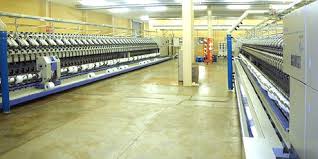SPINNING

|
Spinning
is a major part of the textile industry. It is part of the textile manufacturing process where three types of fibre are converted into yarn, then fabrics, which undergo finishing processes such as bleaching to become textiles. The textiles are then fabricated into clothes or other products. There are three industrial processes available to spin yarn, and a handicraft community who use hand spinning techniques. Spinning is the twisting together of drawn out strands of fibres to form yarn, though it is colloquially used to describe the process of drawing out, inserting the twist, and winding onto bobbins.
|
Types Of Spinning
- Ring-spinning
- air-jet
- open-end spinning
Scope Of Computerization In Spinning Mills
The objective of this computer-based software is to monitor and control day-to-day process and document flow within the organization. In this process the software will try to identify all major and minor cost centres, workout cost figures and generate information to the higher management, so that the cost parameters can be optimised. This system will consider material and human resource of the enterprise and try to optimise their usage.
Separate systems are developed for each of the locations, factories, offices. Data can be exchanged between those disconnected modules. There will be two main systems, one for the mill and other for the head office. Each of these two locations will have their own separate local area network and local central database. Other two offices may use stand-alone computers for their specific needs. There will be a web server space located anywhere in the world, which will be used as a sink to transfer data between systems.
This software covers following areas:
- Process Control
- Purchase Management
- Procurement of Raw Material
- Acceptance of Client Order and Distribution of Finished Product
- Store Management
- Bank Formalities, Pre and Post export documentation
- Financial Management
- Payroll and Personnel Management
- Marketing
-
Break Even Analysis
-
Production And planning Control
- Vehicle Management
- Waste Management